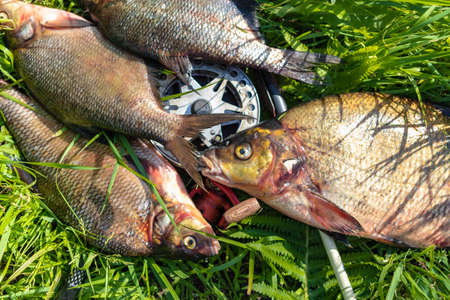1. Understanding Endangered and Threatened Fish Species
If youre an angler in the U.S., its important to understand what it means when a fish species is labeled as “endangered” or “threatened.” These terms arent just buzzwords—they carry legal meanings under the Endangered Species Act (ESA), a federal law passed in 1973 to protect animals and plants at risk of extinction.
What Do “Endangered” and “Threatened” Mean?
According to the ESA, fish species are categorized based on their risk of extinction:
| Status | Definition |
|---|---|
| Endangered | A species that is in danger of extinction throughout all or a significant portion of its range. |
| Threatened | A species that is likely to become endangered in the foreseeable future. |
Who Decides If a Fish Is Endangered or Threatened?
The responsibility for identifying and protecting endangered and threatened fish species falls on two main federal agencies:
- U.S. Fish and Wildlife Service (USFWS): Handles freshwater fish species.
- National Marine Fisheries Service (NMFS), also known as NOAA Fisheries: Manages marine and anadromous fish, like salmon that migrate from saltwater to freshwater.
State wildlife agencies often work with these federal groups to monitor local populations, enforce regulations, and support recovery programs. So even if youre fishing in your local lake or river, both state and federal rules might apply if youre near critical habitat areas.
Why This Matters for Anglers
Catching an endangered or threatened fish—whether intentionally or by accident—can have serious consequences. Knowing which species are protected helps you make informed decisions about where and how you fish, keeping you within the law and helping to preserve our waters for future generations.
Your Role on the Water
You don’t need to be a biologist to help protect vulnerable fish species. Simple actions like learning how to identify protected fish, practicing catch-and-release properly, and respecting posted regulations go a long way toward conservation efforts.
This basic understanding sets the stage for deeper knowledge about how anglers can contribute to protecting endangered and threatened fish species while still enjoying the sport they love.
2. Common Endangered Fish Species in U.S. Waters
Across the United States, many fish species are facing serious threats due to habitat loss, pollution, overfishing, and climate change. As anglers, its important to be familiar with these species—not only to avoid accidentally catching them but also to help protect them. Heres a closer look at some of the most recognized endangered and threatened fish found in American waters.
Atlantic and Gulf Coasts
These coastal regions are home to a variety of fish that are struggling to survive due to rising ocean temperatures and habitat disruption.
| Species | Status | Region | Key Threats |
|---|---|---|---|
| Atlantic Sturgeon | Endangered | East Coast (Maine to Florida) | Dams, water pollution, bycatch |
| Gulf Sturgeon | Threatened | Northern Gulf of Mexico rivers | Dredging, habitat degradation |
Great Lakes Region
The Great Lakes have unique freshwater ecosystems that support several native fish species now under pressure from invasive species and industrial pollution.
| Species | Status | Region | Key Threats |
|---|---|---|---|
| Lake Sturgeon | Threatened (in parts) | Great Lakes Basin | Habitat loss, overharvesting, dams blocking migration routes |
Pacific Northwest and California Watersheds
The rivers and streams of the West Coast are vital for salmonids—fish like salmon and trout—that migrate between freshwater and the Pacific Ocean.
| Species | Status | Region | Key Threats |
|---|---|---|---|
| Chinook Salmon (Spring-run) | Endangered/Threatened (depending on population) | Sacramento River & Columbia River systems | Dams, warming water temperatures, reduced stream flow |
| Steelhead Trout | Threatened (various populations) | Cascades & Central California Coastlines | Poor water quality, blocked access to spawning grounds |
| Coho Salmon (Southern Oregon/Northern California) | Threatened | Klamath & Eel Rivers | Sedimentation, logging runoff, low stream flows during droughts |
Southeast U.S. Rivers and Wetlands
This region includes diverse aquatic environments where several rare fish species are found—and many are highly sensitive to changes in water flow and temperature.
| Species | Status | Region | Key Threats |
|---|---|---|---|
| Pallid Sturgeon | Endangered | Lower Mississippi and Missouri Rivers | Dams, channelization, water quality issues |
| Cape Fear Shiner | Endangered | Cape Fear River Basin (North Carolina) | Agricultural runoff, habitat loss |
Why This Matters for Anglers
If you fish in any of these regions, it’s critical to know which species are protected. Accidentally catching an endangered or threatened fish can result in fines and hurt recovery efforts. Always check local regulations and use proper catch-and-release techniques when necessary. Understanding what’s at stake helps us all become better stewards of America’s waters.
